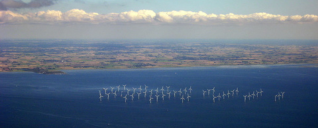
The impact of community energy on everyday life: successful cases – Ateneo
Energy is a key element in our daily lives. From the Domestic consumption to industrial production, through mobility and public serviceswe constantly depend on electricity and energy resources to carry out any activity. Despite its importance, the current energy model is based on a centralized system in the hands of a few large companies that manage the production and distribution of energy following strictly economic criteria, with little margin for citizen participation and with an environmental impact that is still very high. This reality has promoted a paradigm shift in recent years, in which more and more communities have chosen to organize and generate their own energy through collective models that put energy sovereignty at the center of ecological transition.
Community energybased on the production and collective management of energy, allows citizens to regain control over this essential resource and ensure that their use is made more efficiently, accessible and sustainable. Energy communities have become a viable solution for many municipalities and neighborhoods that seek to reduce dependence on the conventional electricity market, stabilize prices and ensure that the energy they consume comes from renewable sources. Beyond economic and environmental benefits, this model has also shown a strong impact on people’s quality of life, promoting social cohesion and fostering a new energy culture based on collaboration and shared responsibility.
Communities that take control of their energy: Successful models on a global scale
Several communities around the world have developed community energy models that have completely transformed their relation to energy. One of the most inspiring examples is the people of Feldheimin Germany, which has become one of the first energetically self -sufficient communities in the world. This small municipality decided to invest collectively in a wind farm, a biogas plant and photovoltaic systems that have allowed to cover all their energy needs without depending on the large electricity companies, achieving that the Energy cost is 30% lower than in the rest of the country and generating stable employment for the maintenance of the facilities.
Another successful case we find it in The island of Samsøin Denmark, which in less than a decade went from completely dependent on fossil fuels to become 100% renewable territory Thanks to the citizen participation and the creation of community energy infrastructure. This initiative has not only reduced the CO₂ emissions on the island to zero, but also turned the residents themselves into energy co -producers, ensuring that the benefits generated by the sale of surpluses are reinvested in improvements for the territory.
In Catalonia, the experience of Barcelonathe public renewable energy trading company promoted by theBarcelona City Councilhas been a step forward to democratize access to energy and offer alternatives to energy oligopoly. Although it still has limited implantation, the project has served as a benchmark for promoting public management of the most transparent energy and based on social and environmental criteria.
The Baix Llobregat: a territory with potential for community energy
This energy transition to more collaborative and sustainable models is also reaching the Baix Llobregata region with high energy demand, but also with a strong cooperative tradition that makes it an ideal territory for the creation of energy communities. In recent years, municipalities like the Prat de Llobregat or Sant Feliu They have started shared self-consumption projects that allow neighbors to benefit from renewable energy generated in public facilities. These projects are based on the installation of solar panels in schools, libraries or sports centers, with the particularity that the energy generated is distributed among citizens through compensation systems on the electric invoice.
On the other hand, the cooperative We are energywhich has a strong presence in the Baix Llobregat, is supporting various initiatives to promote distributed generation and foster self -production among its partners. This cooperative has become a key player in the transformation of the Catalan energy model, showing that it is possible to manage energy collectively and non -profit.
Despite these advances, there are still many challenges to consolidate community energy in the region. Current legislation still has difficulty developing energy self -management projects, and lack of institutional funding and support often limits the ability to climb these initiatives. In addition, there is still a widespread ignorance of the benefits and operation of these models, which hinders their implementation in some municipalities.
Towards a fairer and more democratic energy model
Community energy is not only a technical alternative for energy transition, but also a tool for social transformation that allows to regain control over an essential resource and put it at the service of the common good. Successful cases around the world and the first experiences in the Baix Llobregat show that this model is viable and that, with the right policies and the involvement of the citizenry, it can be the rule instead of the exception.
The future demands to consolidate a network of energy communities that will lead to a more decentralized and transparent system. Alliances must be encouraged between city councils, cooperatives and social economy entities to promote new projects and ensure that the energy transition is not dominated by the same actors who have controlled the market so far. This also involves demanding a more favorable regulatory framework, with mechanisms of public support and incentives for those initiatives that are committed to distributed generation and citizen participation.
The Baix Llobregat has the potential to become a benchmark in this new model, taking advantage of its associative and cooperative fabric to lead a change that is already underway to many other territories. Energy cannot remain a business in the hands of a few, but a collective right and with criteria of social and ecological justice.






